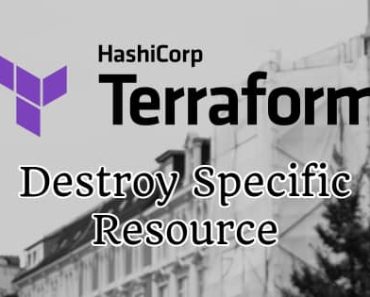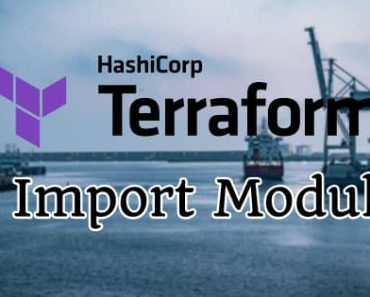In summary, Terraform is a widely-used infrastructure provisioning and configuration management tool that allows you to define and manage infrastructure resources using a declarative language. On the other hand, Terragrunt complements Terraform by extending its functionality and providing features like remote state management, environment-specific configurations, and configuration inheritance.
Terragrunt simplifies the management of multiple Terraform modules, promotes code reuse, and enhances collaboration. While Terraform focuses on infrastructure provisioning, Terragrunt enhances the overall infrastructure management experience by addressing common challenges and providing additional convenience features.
In this article, we will delve into the differences between Terraform and Terragrunt, their key features, and the scenarios where each tool shines.
Table of Contents
Understanding Terraform
What is Terraform?
Terraform is an open-source infrastructure provisioning and configuration management tool created by HashiCorp. It allows you to define infrastructure as code using a declarative language, enabling you to describe your desired infrastructure state and manage its lifecycle.
Terraform supports multiple cloud providers and services like AWS, Azure, Oracle Cloud, and Google Cloud, making it highly versatile and widely adopted in the industry.
Key Features of Terraform
Terraform offers several key features that make it a powerful tool for managing infrastructure:
- Infrastructure as Code (IaC): With Terraform, you define your infrastructure using a simple and human-readable configuration language, treating your infrastructure as code.
- Declarative Configuration: Terraform allows you to declare the desired state of your infrastructure, and it takes care of figuring out the necessary actions to achieve that state.
- Resource Provisioning: Terraform provisions resources across various cloud providers and services, including virtual machines, storage, networking, and more.
- Dependency Management: Terraform automatically handles resource dependencies, ensuring the correct order of provisioning and preventing race conditions.
- State Management: Terraform maintains a state file that tracks the state of your infrastructure, enabling you to manage and update resources without impacting the entire infrastructure.
- Modularity and Reusability: Terraform promotes modularity by allowing you to create reusable modules and share them across projects, improving code organization and maintainability.
Understanding Terragrunt
What is Terragrunt?
Terragrunt, also developed by HashiCorp, is a thin wrapper and extension for Terraform that enhances its functionality and addresses common challenges faced when managing infrastructure at scale.
Terragrunt simplifies the configuration and management of multiple Terraform modules and provides additional features such as remote state management and environment-specific configurations.
Key Features of Terragrunt
Terragrunt offers several key features that make it a valuable companion to Terraform:
- Remote State Management: Terragrunt simplifies the configuration and management of remote state, allowing for collaboration and shared state across teams.
- Environment Management: Terragrunt enables environment-specific configurations, making it easier to manage multiple environments (e.g., development, staging, production) within a single codebase.
- Dependency Management: Similar to Terraform, Terragrunt manages resource dependencies, ensuring the correct provisioning order and preventing issues caused by race conditions.
- Configuration Inheritance: Terragrunt supports configuration inheritance, allowing you to define common settings at higher levels and override them at lower levels, enhancing code reuse and reducing duplication.
- Automated Locking: Terragrunt provides a locking mechanism that prevents concurrent runs, ensuring consistency and avoiding conflicts in shared infrastructure deployments.
Terraform vs Terragrunt: Key Differences
Now, let’s compare Terraform and Terragrunt across various aspects of infrastructure management:
Configuration Management
Terraform focuses on infrastructure provisioning and configuration management. It provides a wide range of resource providers and modules, allowing you to define and manage infrastructure resources using a declarative syntax.
On the other hand, Terragrunt extends Terraform’s functionality by simplifying the management of multiple Terraform modules, offering configuration inheritance, and supporting environment-specific configurations.
Code Reusability
Both Terraform and Terragrunt emphasize code reusability. Terraform allows you to create and share modules, which are reusable components that encapsulate infrastructure resources and configurations.
Terragrunt further enhances code reuse by providing configuration inheritance, allowing you to define common settings at higher levels and override them at lower levels, reducing duplication and improving maintainability.
Environment Management
Terragrunt shines when it comes to managing multiple environments within a single codebase. It allows you to define environment-specific configurations, making it easier to manage different environments such as development, staging, and production.
Terraform, while not specifically built for environment management, can still handle multiple environments, but it requires additional setup and configuration.
Dependency Management
Both Terraform and Terragrunt handle resource dependencies to ensure the correct order of provisioning. They analyze the relationships between resources and automatically determine the dependencies, preventing race conditions and ensuring a consistent infrastructure state.
This feature is crucial when managing complex infrastructures with interdependent resources.
State Management
Terraform and Terragrunt both maintain a state file that tracks the state of your infrastructure. Terraform’s state file keeps track of the resources provisioned, their configuration, and the relationships between them.
Terragrunt builds upon this by simplifying remote state management, enabling collaboration and sharing of the state file across teams. Remote state management is particularly useful when multiple individuals or teams are working on the same infrastructure.
Use Cases for Terraform and Terragrunt
Terraform Use Cases
Terraform is suitable for a wide range of infrastructure provisioning scenarios, including:
- Cloud Infrastructure: Provisioning and managing resources in popular cloud platforms like Amazon Web Services (AWS), Microsoft Azure, and Google Cloud Platform (GCP).
- Multi-Cloud Deployments: Managing infrastructure deployments across multiple cloud providers, enabling hybrid or multi-cloud architectures.
- Infrastructure Orchestration: Orchestrating complex infrastructure setups involving various resources, such as virtual machines, containers, databases, and networking components.
- Immutable Infrastructure: Implementing immutable infrastructure patterns, where infrastructure is treated as disposable and easily replaceable.
- Infrastructure Testing and Validation: Creating infrastructure test suites to validate changes before deployment, ensuring stability and reducing the risk of downtime.
Terragrunt Use Cases
Terragrunt complements Terraform and is particularly useful in the following scenarios:
- Managing Multiple Environments: Terragrunt simplifies the management of multiple environments, allowing for streamlined configurations and deployments across development, staging, and production environments.
- Sharing Terraform Modules: Terragrunt makes it easier to share and reuse Terraform modules within and across projects, improving code organization and reducing duplication.
- Remote State Collaboration: Terragrunt’s remote state management enables collaboration by providing a centralized state file that can be shared across teams, ensuring consistent infrastructure deployments.
- Infrastructure as Code (IaC) Governance: Terragrunt aids in enforcing standardization and governance across infrastructure deployments, ensuring adherence to best practices and guidelines.
Best Practices and Tips for Using Terraform and Terragrunt
To make the most of Terraform and Terragrunt, consider the following best practices:
Organizing Infrastructure Code
Organize your infrastructure code into modules and reusable components. Use meaningful names and directories to reflect the purpose and structure of your infrastructure.
Using Modules
Leverage Terraform modules to encapsulate and reuse infrastructure resources. Modules promote code reusability, maintainability, and consistency across projects.
Leveraging Input Variables and Output Values
Use input variables to parameterize your infrastructure code. This allows for flexibility and makes your code more reusable. Similarly, output values can provide useful information to other modules or scripts.
Version Control and Collaboration
Utilize version control systems like Git to track changes to your infrastructure code. Establish collaborative workflows and ensure proper code review processes for a smooth development experience.
Testing and Validation
Implement infrastructure testing and validation frameworks to catch errors and issues early. Automated testing can help identify misconfigurations and potential risks before deploying infrastructure changes.
Conclusion
In conclusion, Terraform and Terragrunt are powerful tools for infrastructure as code management.
While Terraform is widely known and used, Terragrunt complements it by providing additional features and simplifying certain aspects of infrastructure management.
FAQs
Q1: Can I use Terragrunt without Terraform?
No, Terragrunt is designed as a wrapper and extension for Terraform. It enhances Terraform’s functionality and provides additional features but requires Terraform as its foundation.
Q2: Which one should I choose, Terraform or Terragrunt?
The choice depends on your specific needs. If you require advanced features like remote state management, environment-specific configurations, and configuration inheritance, Terragrunt can be a valuable addition to your Terraform workflow. Otherwise, Terraform alone might suffice.
Q3: Are Terraform and Terragrunt suitable for small-scale projects?
Yes, both Terraform and Terragrunt can be used for small-scale projects. However, their true power shines when managing complex infrastructures and multiple environments.
They scale well and provide benefits irrespective of project size.
Q4: How do I handle secrets and sensitive data in Terraform and Terragrunt?
It is recommended to use appropriate secret management tools, such as HashiCorp Vault or cloud provider-specific solutions, to handle secrets and sensitive data securely. Avoid hardcoding secrets in your infrastructure code.
Q5: Can Terraform and Terragrunt be used with cloud providers other than AWS?
Yes, both Terraform and Terragrunt support multiple cloud providers, including AWS, Azure, GCP, and many others. They provide provider-specific plugins and resources to provision infrastructure across different cloud platforms.



![[Solved] Terraform will damage your computer on Mac [Solved] Terraform will damage your computer on Mac](https://www.storagetutorials.com/storage/2023/04/xterraform-will-damage-your-computer-370x297.jpg.pagespeed.ic.4YEnVqMd3a.jpg)
